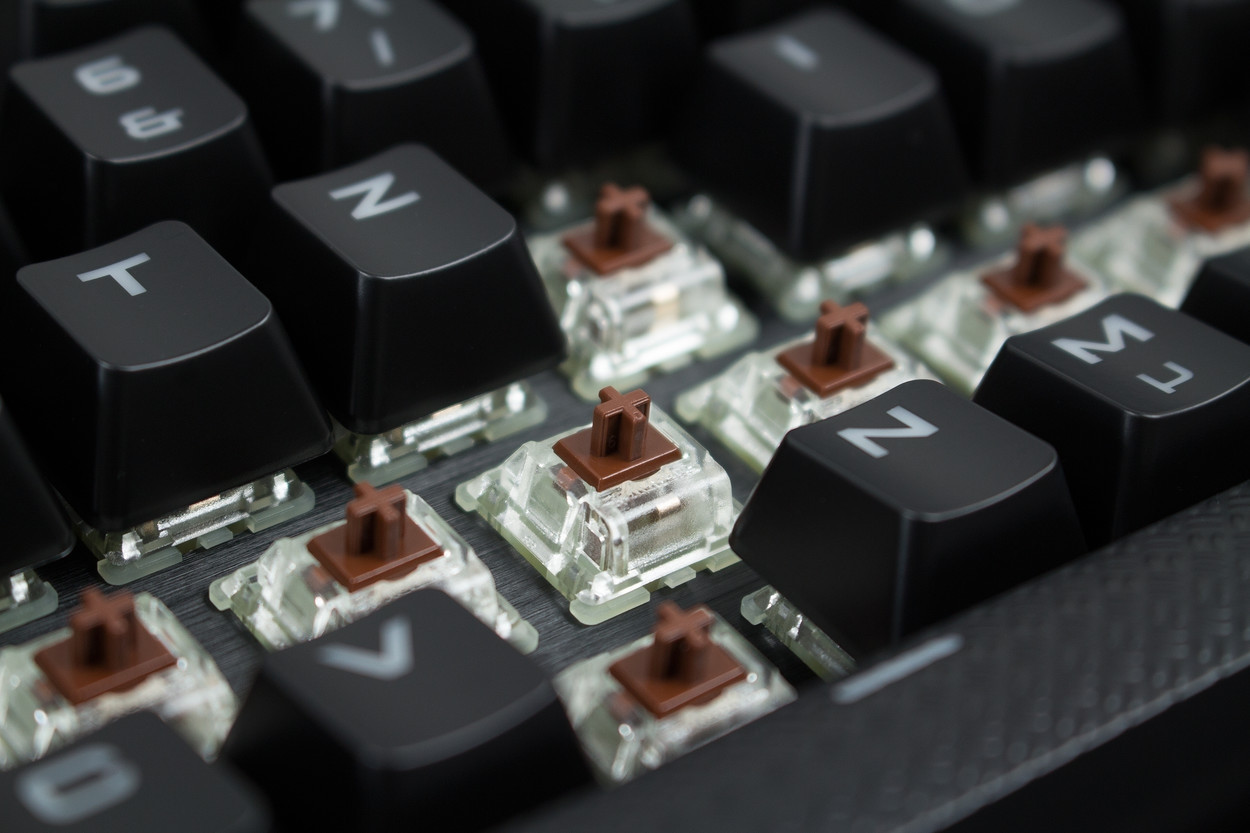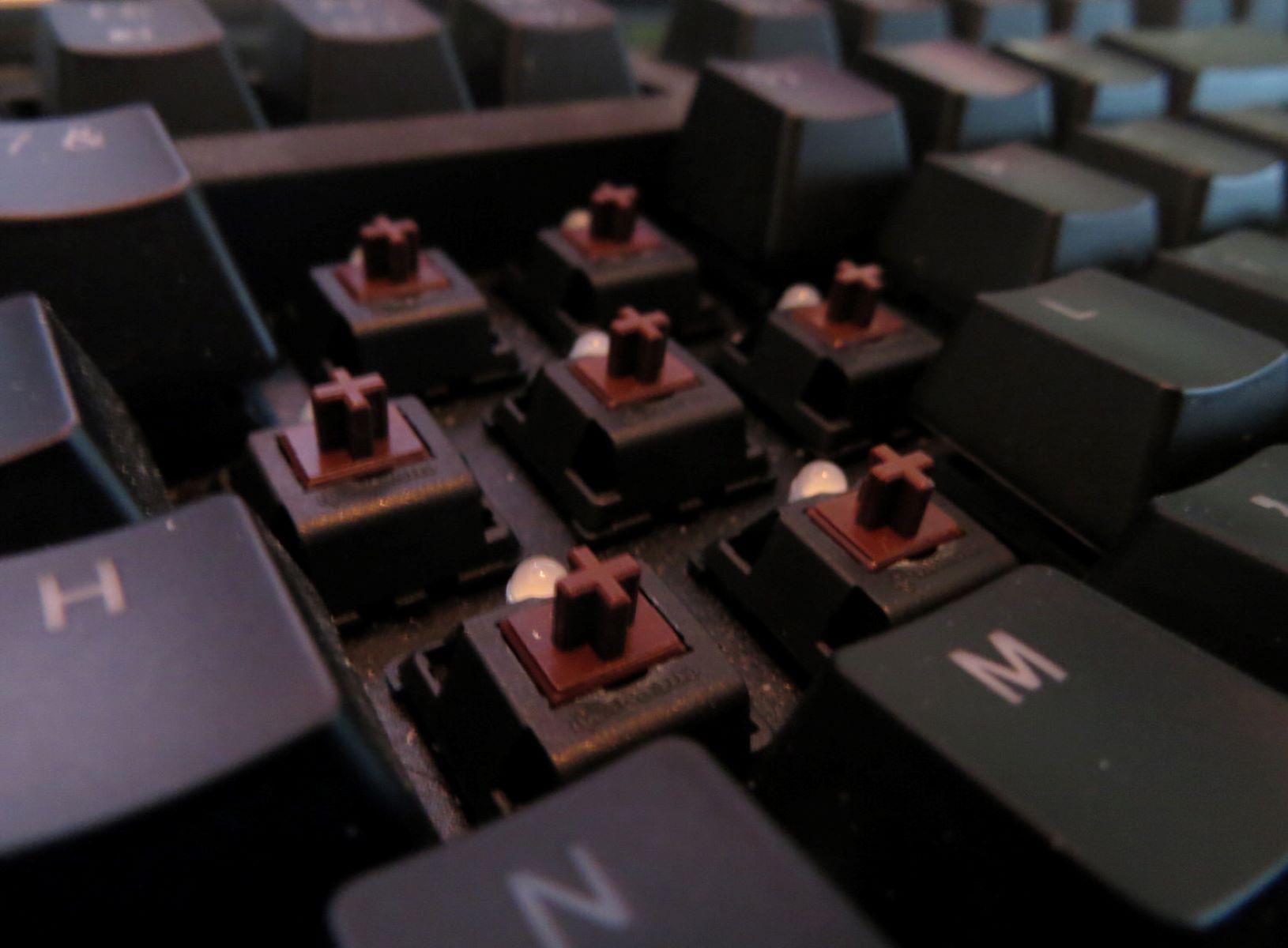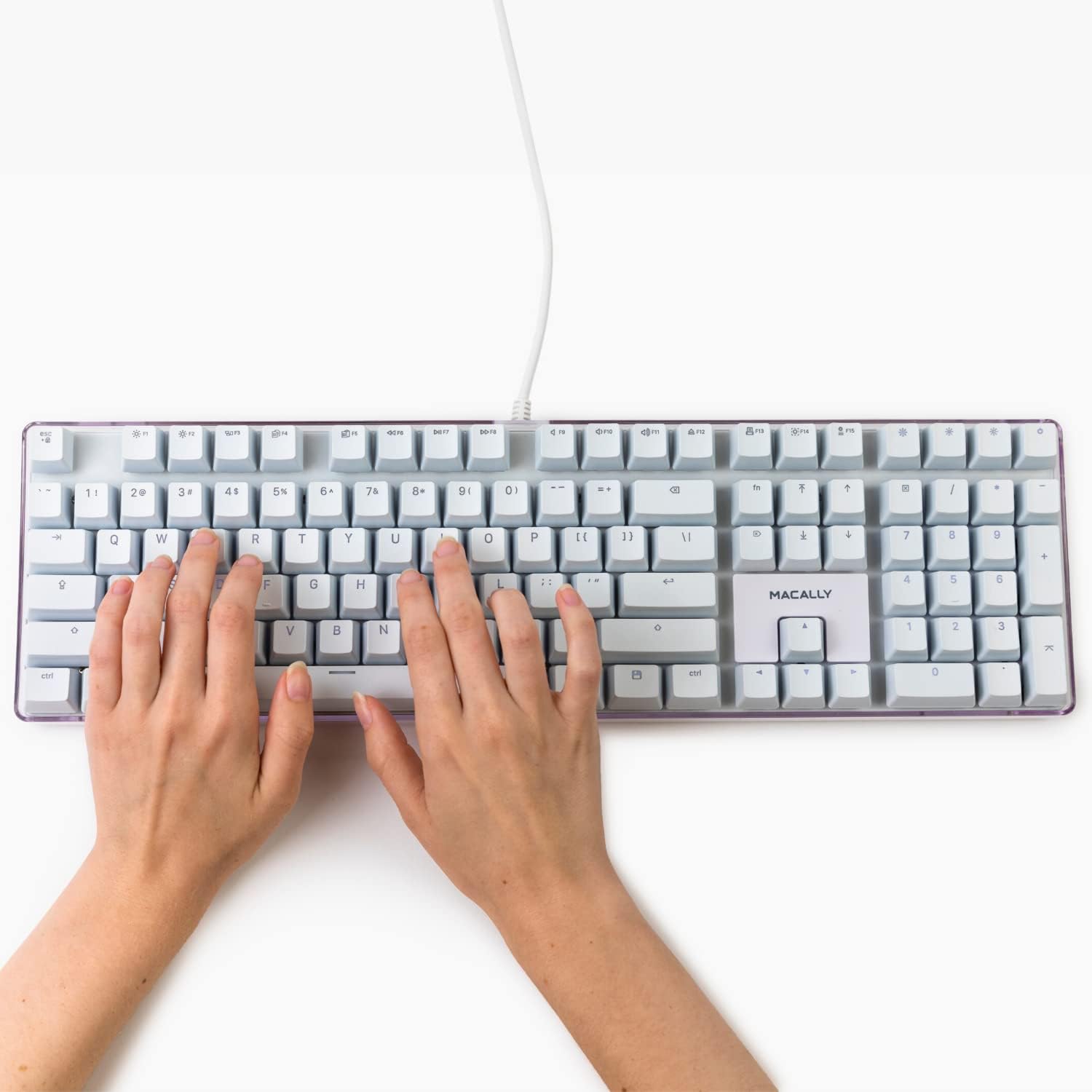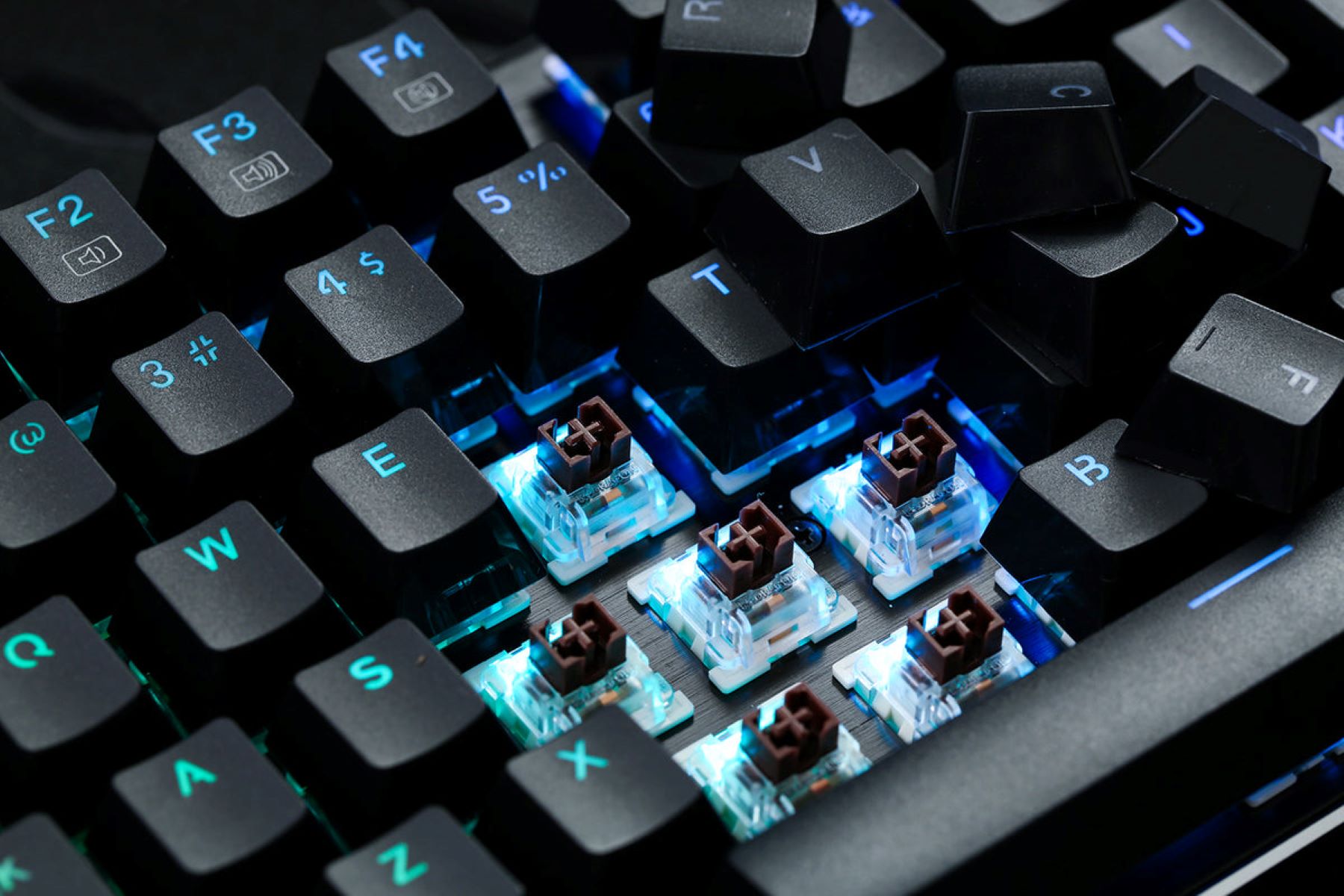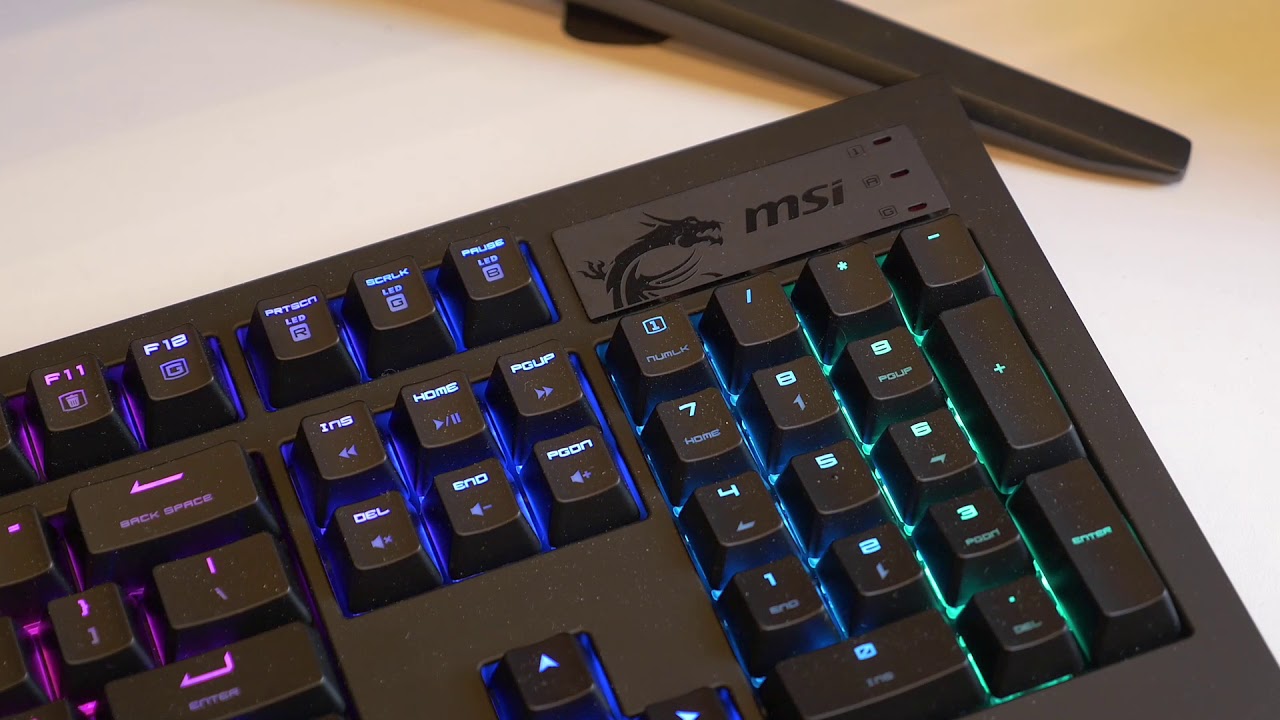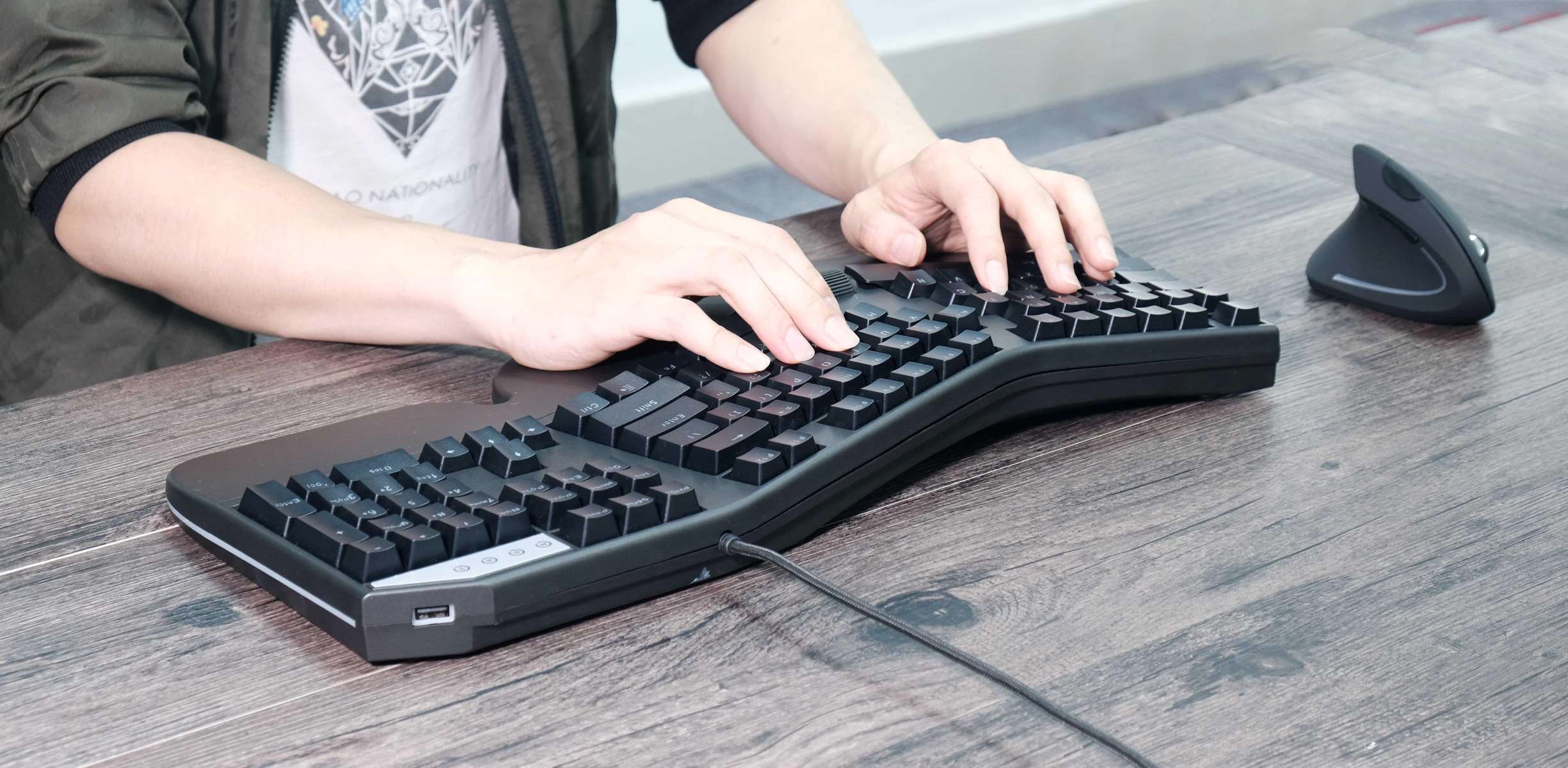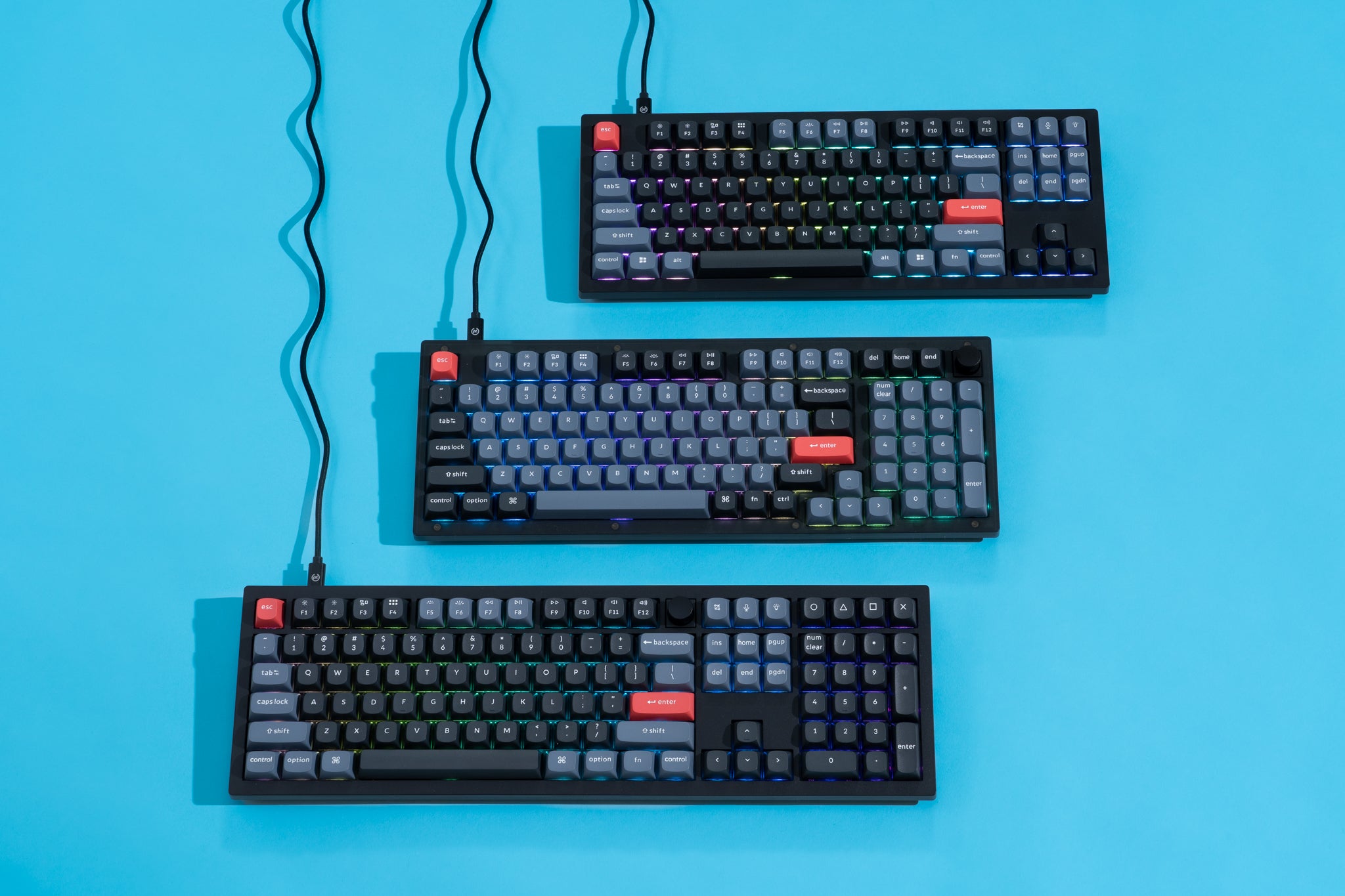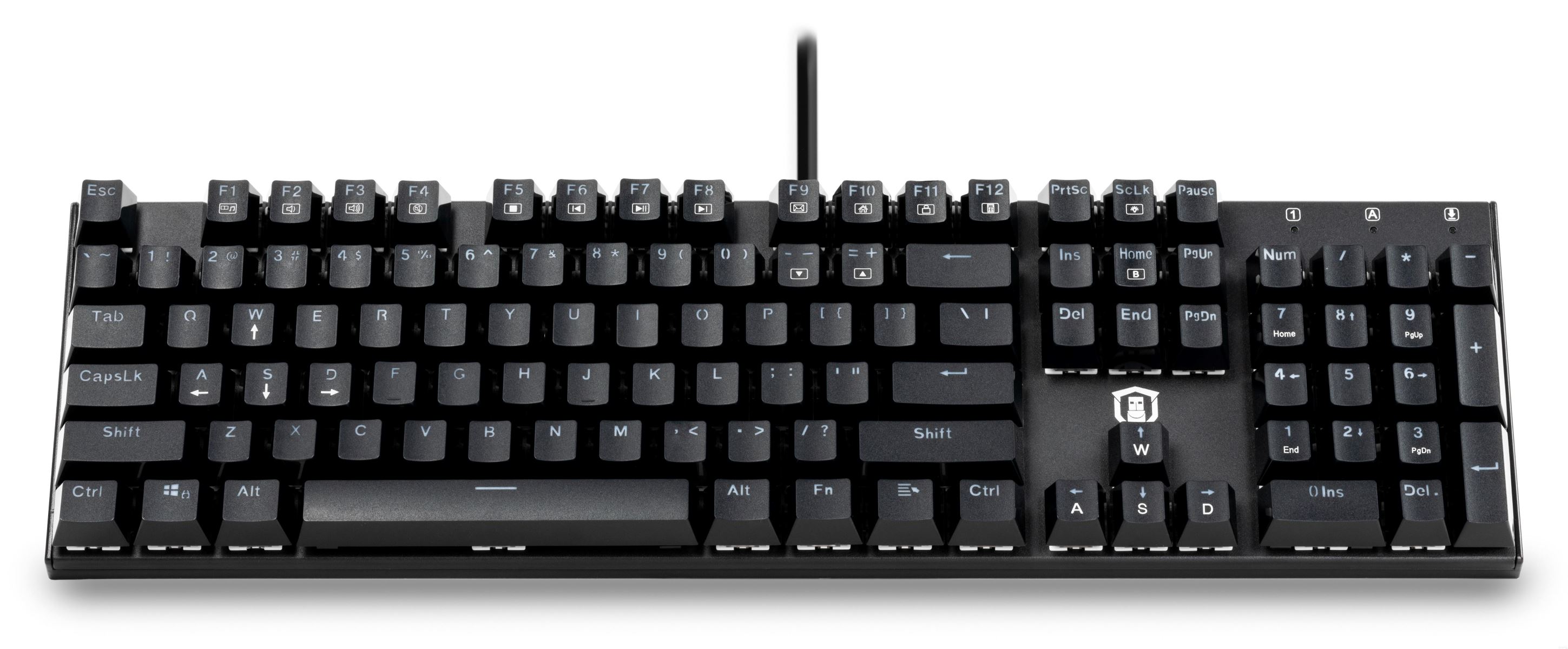Introduction
Mechanical keyboards have gained immense popularity among tech enthusiasts, gamers, and professionals due to their tactile feedback, durability, and overall typing experience. These keyboards are known for their distinct switches, each offering a unique typing feel and sound. Among the various types of switches available, brown switches stand out as a versatile and well-balanced option, catering to a wide range of users.
In this article, we will delve into the world of mechanical keyboards and explore the specific characteristics, advantages, and disadvantages of brown switches. Whether you are a seasoned keyboard aficionado or a newcomer curious about the nuances of mechanical keyboards, this guide aims to provide valuable insights to help you make an informed decision.
Understanding the intricacies of mechanical keyboards and their switches is crucial for anyone seeking an optimal typing or gaming experience. With the plethora of options available in the market, it's essential to grasp the unique features that set brown switches apart from other switch types. By the end of this article, you will have a comprehensive understanding of brown switches and be better equipped to determine whether they align with your preferences and usage requirements.
So, let's embark on a journey to unravel the allure of mechanical keyboards and delve into the world of brown switches, uncovering their distinct attributes, advantages, and potential drawbacks. Whether you're a writer, programmer, gamer, or simply someone who appreciates a satisfying typing sensation, the insights presented here will aid you in making an informed decision regarding the suitability of brown switches for your keyboarding needs.
What Are Mechanical Keyboards?
Mechanical keyboards are input devices that utilize individual mechanical switches for registering keystrokes. Unlike their membrane keyboard counterparts, which rely on a single rubber membrane to actuate keys, mechanical keyboards feature discrete switches for each key. This design not only enhances the durability of the keyboard but also contributes to a more tactile and responsive typing experience.
One of the defining characteristics of mechanical keyboards is the variety of switch types available, each offering distinct tactile feedback, actuation force, and audible sound. These switches are typically categorized into families such as linear, tactile, and clicky, with each type catering to different user preferences and applications.
Unlike membrane keyboards, which often exhibit a mushy or undefined feel, mechanical keyboards provide a more pronounced tactile feedback, allowing users to discern precisely when a key press is registered. This feature is particularly favored by touch typists, gamers, and individuals who spend extended periods typing, as it reduces the likelihood of accidental keystrokes and provides a more satisfying typing experience overall.
Furthermore, the construction of mechanical switches contributes to their longevity, with most switches rated for tens of millions of keystrokes. This durability is a significant advantage for users seeking a long-lasting investment in a keyboard, as it ensures consistent performance and reliability over an extended period.
Overall, mechanical keyboards are revered for their robust construction, customizable typing feel, and diverse switch options, making them a preferred choice for a wide range of users, including programmers, writers, gamers, and professionals seeking a dependable and responsive typing interface.
What Are Brown Switches?
Brown switches are a type of mechanical keyboard switch that falls within the tactile switch category. These switches are designed to provide a noticeable tactile bump without generating an audible click, offering a balance between tactile feedback and a quieter typing experience. This characteristic makes brown switches well-suited for both typing and gaming, as they deliver a discernible actuation point without the audible disturbance often associated with clicky switches.
One of the distinguishing features of brown switches is their tactile feedback, which occurs midway through the key press. This tactile bump provides users with a clear indication that the keystroke has been registered, allowing for precise typing and reducing the likelihood of unintentional key presses. The tactile feedback of brown switches is often described as a subtle bump, providing a satisfying sensation without being overly pronounced.
Compared to linear switches, which lack tactile feedback, and clicky switches, which produce an audible click with each key press, brown switches offer a more understated typing experience. This makes them suitable for environments where a quieter keyboard operation is preferred, such as shared workspaces or home offices where noise levels need to be minimized.
Additionally, brown switches are known for their versatility, appealing to a broad spectrum of users due to their balanced tactile feel and relatively quiet operation. Whether you’re engaged in prolonged typing sessions, coding tasks, or intense gaming sessions, brown switches provide a tactile typing experience without the audible distraction of clicky switches, making them a popular choice for individuals seeking a versatile and responsive typing interface.
Characteristics of Brown Switches
Brown switches exhibit several key characteristics that contribute to their appeal and versatility in the realm of mechanical keyboards. Understanding these traits is essential for individuals seeking a switch type that aligns with their specific typing or gaming preferences.
- Tactile Bump: Brown switches are renowned for their tactile feedback, characterized by a discernible bump in the key press. This tactile bump occurs midway through the key’s travel, providing users with a clear indication of the actuation point without generating an audible click. The tactile feedback of brown switches contributes to a satisfying and responsive typing experience, enhancing overall typing accuracy and comfort.
- Quieter Operation: In contrast to clicky switches that produce an audible click with each keystroke, brown switches offer a quieter typing experience. While the tactile bump is perceptible, the absence of an audible click makes brown switches suitable for environments where noise levels need to be minimized, such as offices, libraries, or shared workspaces.
- Versatility: Brown switches are prized for their versatility, catering to a diverse user base encompassing typists, programmers, and gamers. The balanced tactile feel of brown switches makes them well-suited for a wide range of applications, allowing users to engage in extended typing sessions or gaming marathons without experiencing the fatigue often associated with other switch types.
- Actuation Force: Brown switches typically require a moderate actuation force, striking a balance between the light actuation of some linear switches and the heavier actuation of certain tactile or clicky switches. This moderate actuation force contributes to a comfortable and responsive typing experience, accommodating users with varying preferences for key resistance.
- Feedback Consistency: Brown switches offer consistent tactile feedback across the keyboard, ensuring that each key press delivers a uniform typing experience. This consistency is particularly advantageous for users who prioritize precise and reliable key actuation, whether for typing, programming, or gaming purposes.
These characteristics collectively contribute to the allure of brown switches, positioning them as a sought-after option for individuals seeking a tactile and responsive typing interface without the audible distraction of clicky switches.
Advantages of Brown Switches
Brown switches offer a host of advantages that make them a compelling choice for users seeking a versatile and tactile typing experience. These advantages encompass various aspects of keyboard usage, catering to the preferences and requirements of a diverse user base.
- Tactile Feedback: The prominent tactile bump of brown switches provides users with a satisfying and discernible typing experience. This tactile feedback enhances typing accuracy and comfort, allowing users to type for extended periods without experiencing excessive strain or fatigue.
- Quiet Operation: Brown switches deliver tactile feedback without generating an audible click, resulting in a quieter typing experience compared to clicky switches. This makes brown switches well-suited for environments where noise levels need to be minimized, ensuring a more peaceful and undisturbed typing environment.
- Versatility: The balanced tactile feel of brown switches caters to a diverse range of users, including typists, programmers, and gamers. Whether engaging in prolonged typing sessions, coding tasks, or intense gaming sessions, brown switches offer a versatile typing interface that adapts to various usage scenarios.
- Reduced Fatigue: The tactile feedback of brown switches contributes to reduced typing fatigue, allowing users to type for extended durations with enhanced comfort and precision. The tactile bump provides a clear indication of key actuation, minimizing the likelihood of bottoming out keys and mitigating strain on the fingers and wrists.
- Actuation Consistency: Brown switches offer consistent tactile feedback across the keyboard, ensuring that each key press delivers a uniform typing experience. This consistency contributes to enhanced typing accuracy and a reliable typing interface, particularly beneficial for users who prioritize precision and responsiveness.
These advantages collectively position brown switches as an appealing choice for individuals seeking a tactile and responsive typing experience without the audible disturbance associated with clicky switches. Whether for professional use, gaming, or general typing tasks, the advantages of brown switches contribute to a satisfying and adaptable typing interface.
Disadvantages of Brown Switches
While brown switches offer numerous advantages, it’s important to consider their potential drawbacks to make an informed decision regarding their suitability for specific usage scenarios. Understanding these disadvantages provides valuable insights for users evaluating the trade-offs associated with brown switches.
- Less Pronounced Tactile Feedback: Some users seeking a more pronounced tactile bump may find the feedback of brown switches to be relatively subtle compared to other tactile switches. Individuals who prefer a more distinct tactile sensation may gravitate towards switches with a more pronounced tactile bump, such as those classified as “tactile and clicky.”
- Preference-Dependent: The tactile feedback of brown switches, while appealing to many users, remains a matter of personal preference. Some individuals may find the tactile bump of brown switches to be less satisfying or noticeable compared to other switch types, highlighting the subjective nature of switch preferences.
- Typing Sound: While brown switches are quieter than clicky switches, they still produce a noticeable sound during typing, albeit softer in comparison. In noise-sensitive environments, users may seek even quieter switch options, such as linear switches, to minimize typing noise further.
- Key Wobble: Brown switches, like many mechanical switches, may exhibit a slight degree of key wobble due to their design. This subtle lateral movement of keys, especially in certain keyboard models, may be perceived as a minor inconvenience by users who prioritize absolute key stability.
- Customization Limitations: Some users who favor extensive customization options for their keyboards may find the aftermarket support for brown switches to be relatively limited compared to other switch types. This limitation may impact the availability of custom keycaps and other keyboard accessories tailored specifically for brown switches.
Considering these potential disadvantages provides valuable insight into the nuanced aspects of brown switches, enabling users to weigh the trade-offs and make an informed decision based on their specific typing preferences, usage environment, and customization requirements.
Who Should Use Brown Switches?
Brown switches are well-suited for a diverse range of users, making them an attractive option for individuals with varying typing preferences and usage requirements. Understanding the ideal user profiles for brown switches is essential for determining whether they align with specific typing or gaming needs.
- Typists and Writers: Individuals engaged in extensive typing tasks, such as writers, journalists, and content creators, can benefit from the tactile feedback and balanced typing experience offered by brown switches. The subtle tactile bump enhances typing accuracy and comfort, promoting a more enjoyable and productive writing process.
- Programmers and Coders: Programmers and coders who require precise and responsive key actuation for coding tasks can find brown switches to be well-suited for their needs. The tactile feedback of brown switches contributes to enhanced typing accuracy, allowing for efficient and comfortable coding sessions.
- Office Environments: Brown switches, with their tactile feedback and quieter operation compared to clicky switches, are suitable for office environments where noise levels need to be minimized. Professionals working in shared workspaces or open office settings can benefit from the tactile typing experience of brown switches without causing disturbance to colleagues.
- Content Creators: Content creators, including video editors, graphic designers, and digital artists, can appreciate the tactile feedback and versatility of brown switches for their creative endeavors. The balanced typing experience of brown switches supports prolonged creative work with enhanced comfort and precision.
- Gaming Enthusiasts: Gamers who prioritize a tactile and responsive typing experience can find brown switches to be a compelling choice. The tactile feedback of brown switches enhances gaming input precision, making them suitable for a wide range of gaming genres.
By catering to typists, programmers, professionals in office environments, content creators, and gaming enthusiasts, brown switches accommodate a diverse array of users seeking a tactile and versatile typing interface. Understanding the specific user profiles that can benefit from brown switches aids in determining their suitability for various usage scenarios and personal preferences.
Conclusion
Exploring the realm of mechanical keyboards and the unique characteristics of brown switches reveals a versatile and tactile typing interface that caters to a diverse user base. The tactile feedback, balanced typing experience, and quieter operation of brown switches position them as an appealing choice for typists, programmers, professionals, content creators, and gaming enthusiasts seeking a responsive and adaptable keyboarding solution.
While brown switches offer notable advantages, such as enhanced typing accuracy, reduced fatigue, and versatility across various usage scenarios, it’s essential to consider their potential drawbacks, including subjective tactile preferences and customization limitations. By acknowledging these nuances, users can make informed decisions based on their specific typing needs, environmental considerations, and customization requirements.
Ultimately, the allure of brown switches lies in their ability to deliver a tactile and satisfying typing experience without the audible disturbance associated with clicky switches. Whether engaged in intensive typing tasks, creative endeavors, coding sessions, or gaming pursuits, brown switches offer a well-balanced and responsive typing interface that adapts to diverse user preferences and usage environments.
By understanding the ideal user profiles for brown switches, including typists, programmers, professionals in office environments, content creators, and gaming enthusiasts, individuals can confidently assess whether brown switches align with their specific typing or gaming needs. The versatility and tactile feedback of brown switches contribute to a compelling typing experience that resonates with a broad spectrum of users, making them a noteworthy option in the realm of mechanical keyboards.
As the realm of mechanical keyboards continues to evolve, brown switches remain a steadfast choice for those seeking a tactile and responsive typing interface. Whether embarking on extensive writing endeavors, programming tasks, creative projects, or immersive gaming experiences, the nuanced characteristics of brown switches offer a compelling blend of tactile feedback, versatility, and comfort, enriching the overall keyboarding experience for a diverse community of users.







